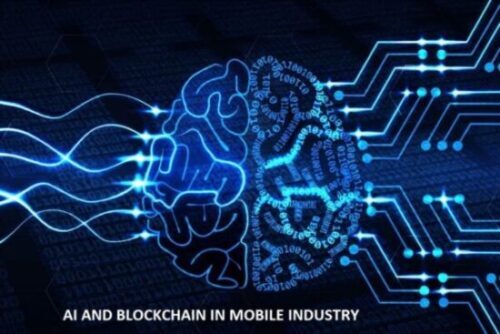When we discuss Blockchain and Artificial Intelligence, one of the most talked points would be its implication on digital payment and the financial industry. What will change when the banking industry completely adopts AI or Blockchain or both in combination. Here we will discuss the implications and the transformations that will occur with the incorporation of digital payments.
When people consider Blockchain, they believe it can help increase the security within the system, and also improve the overall functioning of the industry. It is a fact that AI and Blockchain have together proven to be a massive game-changer for almost all the industries globally. It will be a transforming technology for digital payments as well.
Artificial Intelligence can help machines learn from past and current data, and help them understand behavior patterns, that will successfully help implement and predict the future.
Blockchain is a distributed ledger system, which is the main reason why you cannot tamper a node or a block without causing a ripple effect across the various stakeholders. Even a minute change will not go unnoticed. As a result, the system and the people within the system will gain complete control over the system, will be able to communicate in real-time, and there is a more regularized visibility across the architecture.
One of the major benefits of having Blockchain in the banking industry would be the removal of intermediaries and too many players within the digital payment system. This will automatically increase the security as well as transparency and provide you with better benefits with fewer resources.
1. Increase Customer Experience
When people move towards online payments, it is but natural for businesses to adopt wallets and online payment methods. However, it is very important to consider how your users will react and what they are looking for when you are devising the payment solution for your website.
One of the most important aspects, which is mostly overlooked, would be the customer experience. People are looking for a more personalized and inclusive experience when it comes to digital payments, and it is not possible if you have not considered the user’s requirements when defining the digital payment solution for them.
AI plays an important role in this case. It will not only help users with digital payments but also assist them with the completion of the payment and quicker purchases. It will offer any payment, order, and refund related support, which will make the users come again to purchase on your site.
2. Reduces Time-to-market
This segment is competitive, and to win against all odds set by the competition, you need to make sure you have a faster and interesting launch. Your need to win the audience over with your payment system should be granted on a unique and impressive approach. You have to reach the market before anyone else does, with an idea that closes the gaps and identifies with the needs of the customer.
Blockchain can help you attain the speed while AI will offer you insights into the customer that will help you build a payment system that matches the current requirement and goal. You will be able to source the right supplies, understand the requirements, and scale up your digital payment system before the competition owing to the two technologies.
With the right analysis and improved understanding of the data, you can enhance your efforts and manage to compete better.
3. Increased Security
It is said that close to 10% of the global GDP will be stored in Blockchain Technology.
Reason for this shift can be attributed to the fact that Blockchain appears to be more secure and promising as compared to the other technologies. For one, Blockchain can control all the different blocks that are associated with a stakeholder and manage the different data available in this block.
With AI within the blocks, you will notice if there is a change in the blocks or any minute transformation. The technology will immediately detect the same, which will eventually help with identifying fraud and cybercrime, and this would help boost security.
· Blockchain will read from the insights made available from AI, which has learned from past data, and it will help boost the security for the data.
· Each node is marked secure with cryptographic signatures, which means nobody can tamper with the data or even enter the Block without access or permission. In case multiple attempts are made to identify the signature, then the technology immediately renders the signature invalid, thus thwarting all attempts to break through it.
· Apart from this, the technology works on a “consensus protocol”, which means there should be verification and validation of the recorded data from the users of the data and those who have been given the permission to do so. As a result, every transaction is considered tamper-proof and immutable.
· The Blockchain technology is democratic in nature, which means there is a need for multiple consensuses for a transaction, and multiple nodes have to be passed for the purpose. This ensures that the malicious attacks don’t take place, and it results in the failure of any sort of cyber attack.
· Apart from this, the data is protected using digital identities, which is difficult to breakthrough. There is a process using which the Blockchain technology manages to identify the user’s identity. This can be KYC or AML depending on the way the Blockchain has been induced into your business. as a result of this method, you can identify if there has been a fraudulent activity using your digital payment system. It also ensures the security of the payment system. As a result, the technology ensures that no user can partake into money laundering or other illegal activities using your payment system
4. Voice Activated Payments
Faster payments and better structuring is the need of the hour. As a result, you require technology not only to make payment easier but also to support your alternative needs. voice-activated payments can make it easier for you to pay while you are working or driving. It will initiate the payment faster and allow you to multitask.
AI is the technology that allows you to complete payments through biometric securities. Your command will be recorded, and no one else can command on your behalf. To make sure the system is secure and impenetrable, Blockchain can be introduced along with AI. It will help improve the overall security and swiftness of the payments.
Blockchain will keep a record of your biometrics, and the two technologies together will know if anyone else is speaking on your behalf. As result, there are fewer chances of someone else operating the payment or getting through payments using your money. This will reduce the number of payment frauds that occur as of now, and will lead to a more trusting and reliable gateway.
Summing Up
Artificial Intelligence has geared up to reduce the number of frauds and improve banking security and reliability. When this technology matches its footsteps with Blockchain, it takes security one notch higher and makes the whole system tamper-proof. With every transaction, there is a full identification of the system, the device, and even the person who initiated the payment. Considering the two technologies work fast, the transactions occur in milliseconds, making it experiential and secure both at the same time.
It is time for banking and financial systems to adopt the combination of better strategies, real-time decision making, and experiential payments.
Also read: Identity Verification Checks – A crucial element to mitigate Digital Frauds




